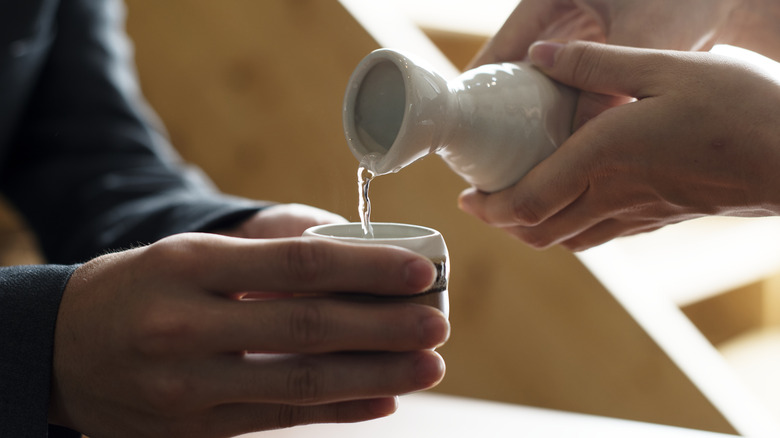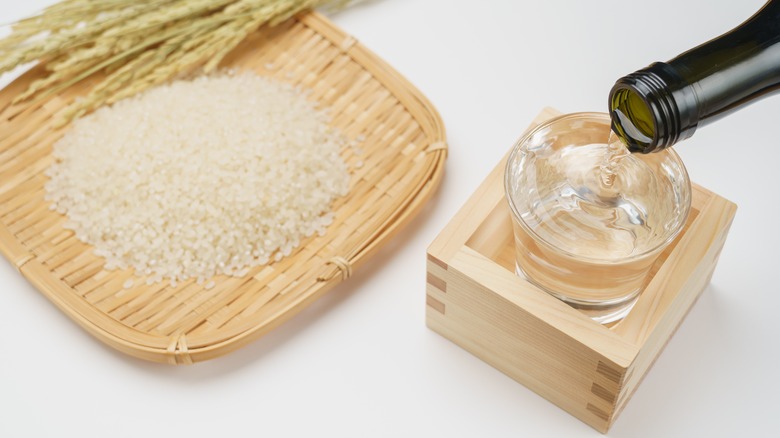Why Pouring Etiquette Matters When Drinking Sake
In Japan, enjoying an alcoholic beverage is a prominent cultural activity. From stiff shochu to a crisp Asahi Dry or esteemed Japanese whisky, there are many delicious modes of attaining a buzz. Yet few have captivated foreign — and domestic — drinkers quite like sake. The over two millennia-old rice-based ferment is varied, traditional, and widely available.
While consumed in many casual settings like izakayas and breweries, it does come along with its own drinking etiquette. Especially in formal situations, it's important to adhere to such traditions as a sign of respect for centuries-old culture. Japanese etiquette notably involves offering, hence why the pouring of sake gains special recognition.
First, sake is served out of a tokkuri, a specific vessel. One never pours for themselves, only others at the table. And they do so by holding the carafe with their right hand while using the left to prop from the bottom. The sake stream should start weak, increase in flow intensity, and then finish gently once concluding. Upon conclusion, the bottle is rotated to avoid any spillage. Following such manners showcases respect, so adhere vigilantly for optimal politeness.
Pouring sake with specific rituals shows respect for tradition
Sake-pouring etiquette is at its strictest when serving someone older or of greater status in a formal setting. When returning the favor, such individuals may relax the intricacies of the protocol. However, regardless of the circumstance, it's a good idea to pour for others, even if it's a beverage other than sake. The serving of fellow drinkers is the most fundamental element of the experience.
Additionally, there's a protocol for receiving the sake, too. The cup should be empty before a refill and picked up with both hands to accept the liquid. Typically, the right hand holds the vessel, with the left offering support, in an analogous manner to pouring. Once replenished, it's polite to take a small sip before placing the sake back down.
While politeness and tradition are the more predominant reasons, there's also a dose of superstition to such rituals. Lapsing on a step in a formal setting can indicate misfortune and be noted by fellow drinkers. As it goes with alcohol, everything gets looser with subsequent rounds, so judge adherence by the circumstance.

